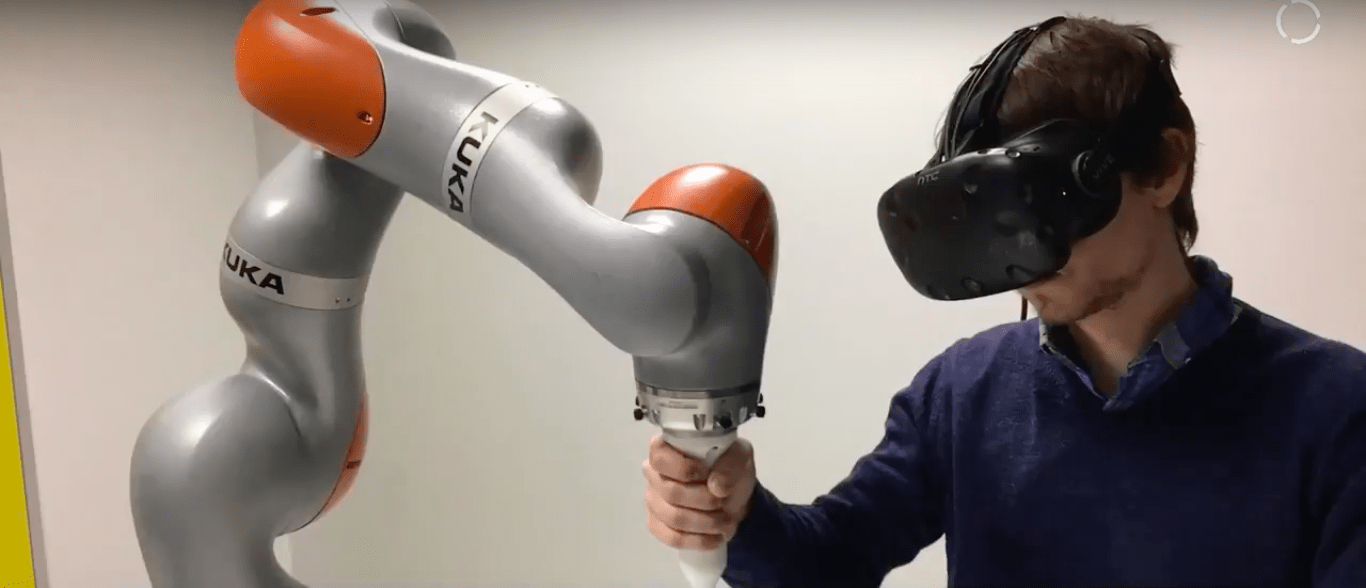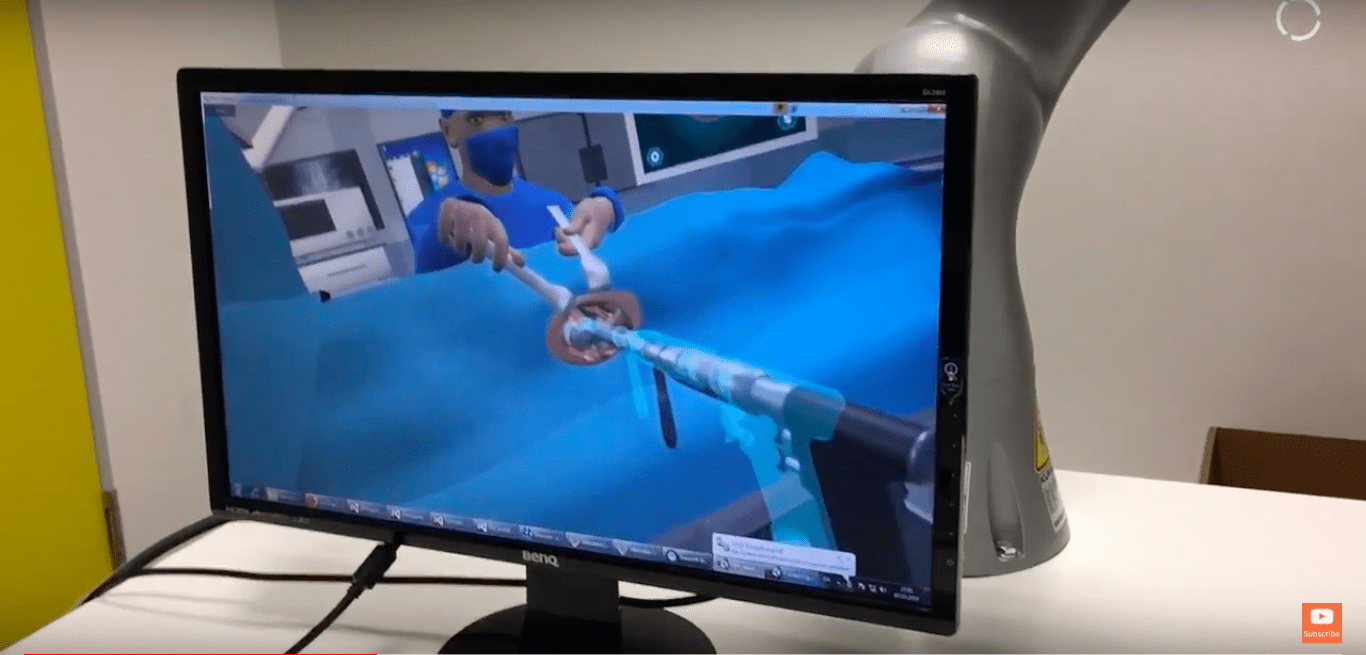How KUKA and Its Robot Arm Could Dramatically Change Surgery of the Future
At the European Robotics Forum in March, KUKA combines its LBR iiwa lightweight robot with virtual reality to enhance hip replacement surgery.
Hip replacement surgery is hard – especially for the surgeon.
Implanting an artificial hip is one of the most challenging steps of an operation. It requires a great deal of force and precision in an area that is often difficult for the surgeon to see, thus making the operation difficult to learn.
Yet, the number of hip replacement surgeries performed in the US more than doubled since 2000. Additionally, surgeons often have to travel between offices and hospitals to care for patients.
But what if there was a better way to train future surgeons and prepare for these operations?
Robotic Arm + Virtual Reality
Presented at the European Robotics Forum in Finland this week, KUKA combines the versatility if its LBR iiwa lightweight robot with virtual reality technology for teleoperation (remote operation).
Teleoperation/ remote surgery: the ability for a doctor to perform surgery on a patient even though they are not physically in the same location.
The sensitive robotic arm performs the operation in the virtual world. Consequently, training surgeons can practice hip replacement surgery through this simulation countless times.
Furthermore, this could someday enable doctors to perform hip replacement surgery without being in the same location as the patient they are operating on. This opens an entirely new door: the world’s best surgeons can be anywhere, at any time.

How is this possible?
The KUKA LBR iiwa robot is hyper-sensitive. It has force torque sensors on each of its seven axes that picks up haptic feedback. This means the LBR iiwa provides human-like touch sensitivity to the surgeon that lets him or her feel for force and cutting limits.
Haptic feedback: aka “haptics”, is the use of touch sensations in a user interface design to provide information back to the end user.
This ensures the LBR iiwa is safe when working directly with humans. Together with real-time visuals in virtual reality, the trainee feels as though he or she is in the operating and performing on a real patient.

Could this change the future of surgery?
Thanks to KUKA, the entire operating room can be simulated for remote surgery. While hip replacement surgery is just one operation KUKA’s team simulated in Finland, the possibilities are boundless.
“Medical simulations like these can provide a very realistic feeling and thus offer optimal possibilities for training – particularly for tasks which require repeated practice or the simulation of a difficult operation,” Dr. Rainer Bischoff, Head of KUKA Corporate Research, said. “The exhibit is a perfect match for the European Robotics Forum – where the community discusses how robotics can help with the most important challenges facing society.”
No longer just a fun, intelligent robotic arm, the versatile LBR iiwa proves it a design of the future beyond the manufacturing warehouse.
Subscribe Today!
Get more of this great content sent directly to your inbox
Adam Beck
Latest posts by Adam Beck (see all)
- 2025 Industrial Marketing Summit Announced for February 26-28 in Austin, TX - May 31, 2024
- Engineering the World’s Longest Solar Eclipse - April 9, 2024
- How AR CAD Models and Apple Vision are Helping Engineers Become Tony Stark - March 12, 2024


